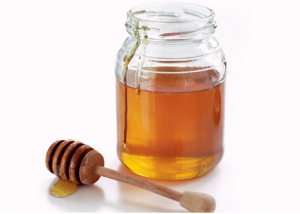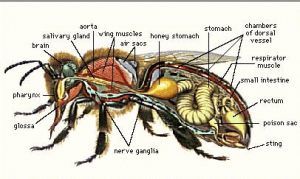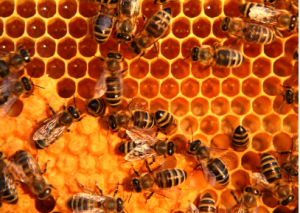 If you’re like me you buy honey from the store and are under the impression it’s 100% pure made by bees. Apparently this has not been the case for quite some time and Florida Department of Agriculture Commissioner Charles Bronson has put an end to it. Starting July 14th, 2009 the only thing in that cute little hive shaped jar you get from Florida will be all natural.
If you’re like me you buy honey from the store and are under the impression it’s 100% pure made by bees. Apparently this has not been the case for quite some time and Florida Department of Agriculture Commissioner Charles Bronson has put an end to it. Starting July 14th, 2009 the only thing in that cute little hive shaped jar you get from Florida will be all natural.
Bees make honey by collecting nectar from flowering plants. This nectar is sucked up by the bee into one of their two stomachs. This second ‘honey stomach’ is only for nectar and it make take visiting 100 to 1500 hundred flowers for them to fill it up. Once home other bees known as house bees suck the nectar from the stomach and begin chewing on it almost like a cow with cud. This action breaks down the high sugar content and protects it from bacteria. From there it is spread throughout the hive in combs and begins to dry. Workers use there wings to fan the honey to speed up the evaporation and the honey becomes thicker. Once thick enough a wax cap is put on the comb until the bees come later to eat it. A typical hive will eat about 120 pounds of honey per year.
the nectar from the stomach and begin chewing on it almost like a cow with cud. This action breaks down the high sugar content and protects it from bacteria. From there it is spread throughout the hive in combs and begins to dry. Workers use there wings to fan the honey to speed up the evaporation and the honey becomes thicker. Once thick enough a wax cap is put on the comb until the bees come later to eat it. A typical hive will eat about 120 pounds of honey per year.
Honey is nature’s perfect food. It does not spoil, needs no preservatives and can be stored almost indefinitely. Archeologists uncovered a 3000 year old tomb that had a sealed honey jar and it was still perfectly edible. Honey is also considered medicinally beneficial as we put honey in warm tea for sore throats which we all knew but also it’s considered a laxative and an even better ointment than most for open sores with more benefits as well.
 So why do honey producers add water? Have you ever seen crystalized honey and thought it was bad so you threw it away? Truth is it’s still good, it just has too much water added to it. The U.S.D.A allows for up to 18.6% of added water to honey for it still to be classified grade A. Most honey will not crystalize with this amount but you definitely do not need as much pure honey to fill up a jar now do you? Selling honey with water means higher profits and if the government allows 18.6 then that’s what most companies will do. There are ways to test for water by weight but probably the easiest is to turn the jar upside down, the quicker the air bubbles rise the more likely your honey has been cut by water.
So why do honey producers add water? Have you ever seen crystalized honey and thought it was bad so you threw it away? Truth is it’s still good, it just has too much water added to it. The U.S.D.A allows for up to 18.6% of added water to honey for it still to be classified grade A. Most honey will not crystalize with this amount but you definitely do not need as much pure honey to fill up a jar now do you? Selling honey with water means higher profits and if the government allows 18.6 then that’s what most companies will do. There are ways to test for water by weight but probably the easiest is to turn the jar upside down, the quicker the air bubbles rise the more likely your honey has been cut by water.
Florida commissioner Bronson also is worried about pesticides and other additives and wants the consumer to be fully aware of what they are getting.
We hope other states, the 28 other states that are looking at this, and hopefully the FDA, will come to the same conclusion, that if it’s not made by a bee, then it’s probably not honey,” Bronson said. “We just want people who are paying honey prices to get 100-percent honey.”
Florida is the 4th largest honey producing state but the first to take this bold move. Annually honey is a $ 40 million dollar industry so the impact could be huge. Violators could face a cease and desist order and have fines of $ 500.00.
So the next time you buy honey check the label to see what you’re getting or turn the bottle upside down. If it’s from Florida, you might bee there awhile.




